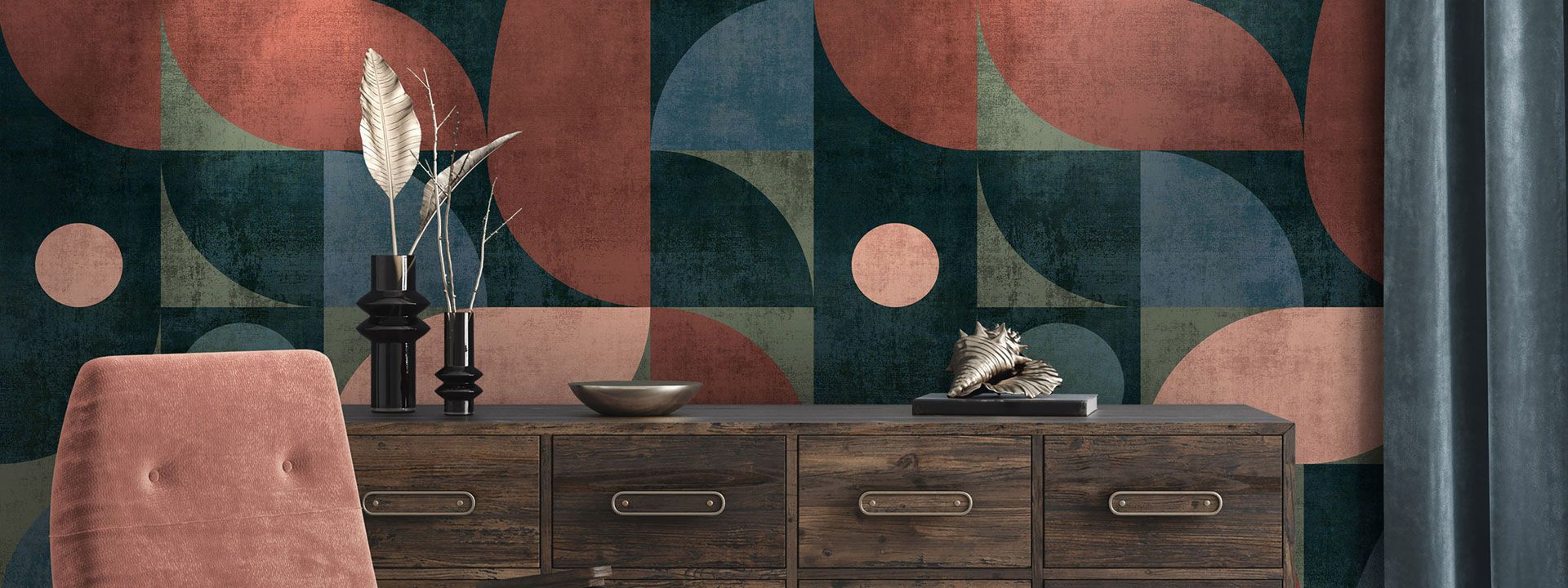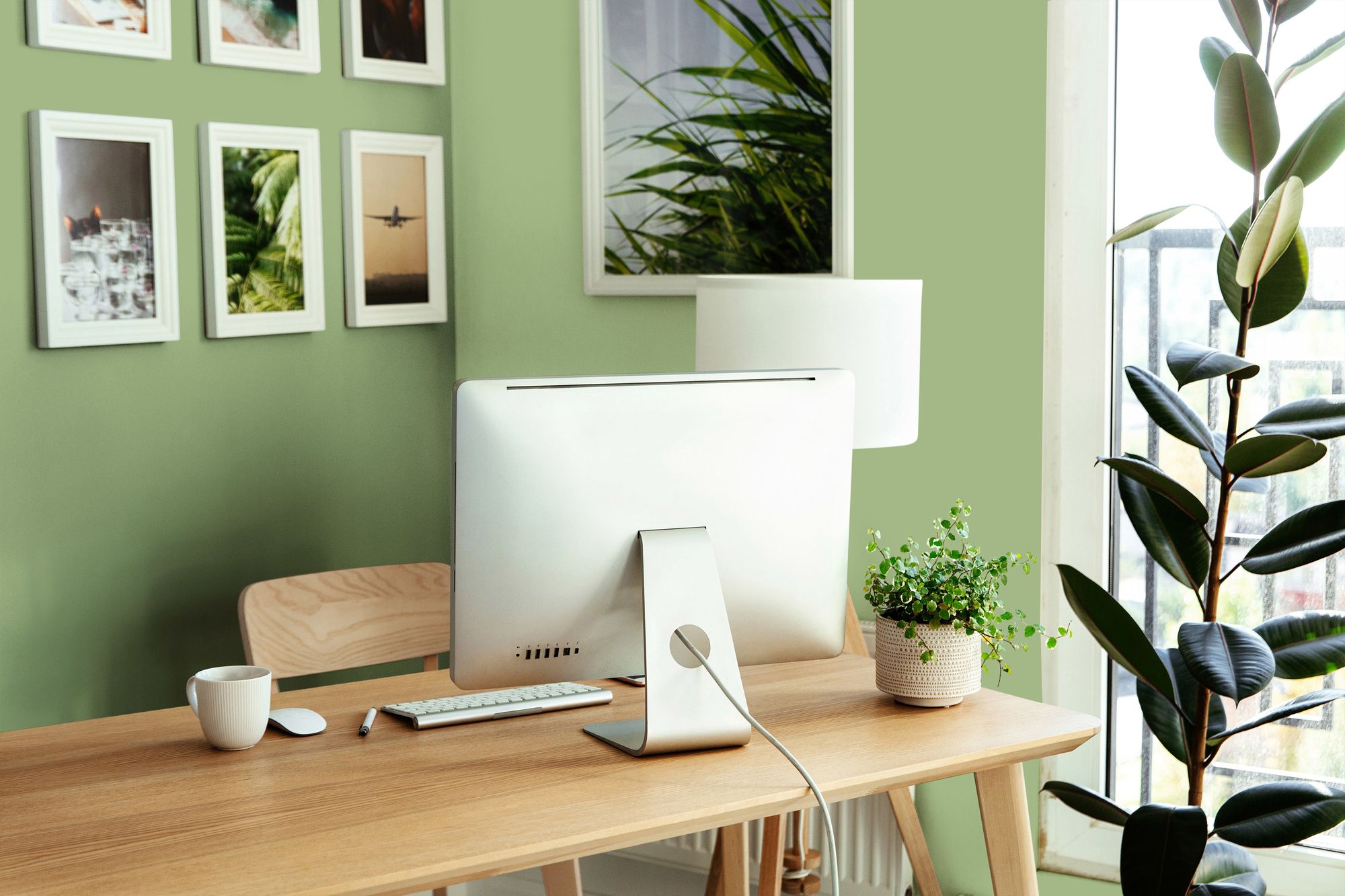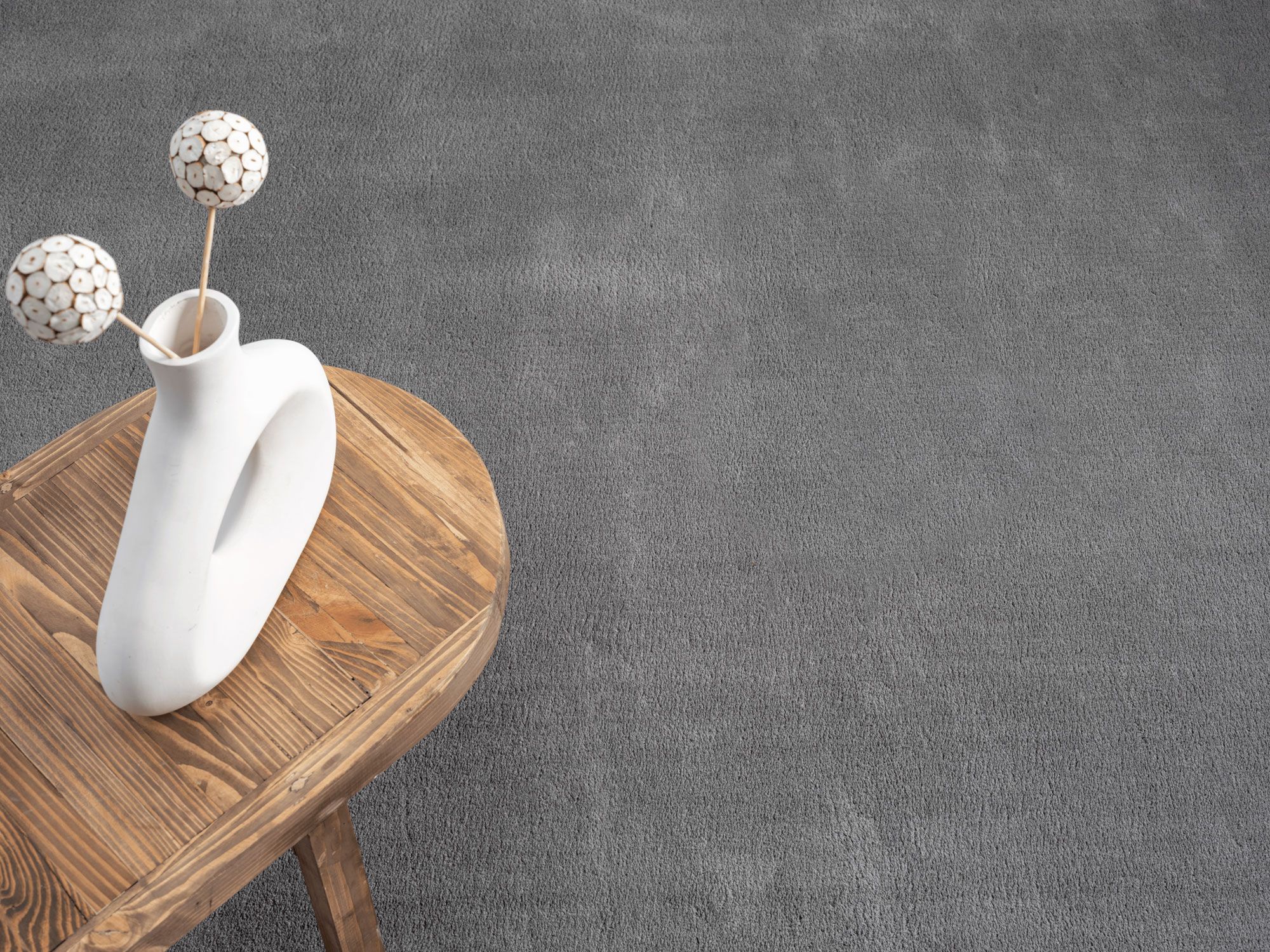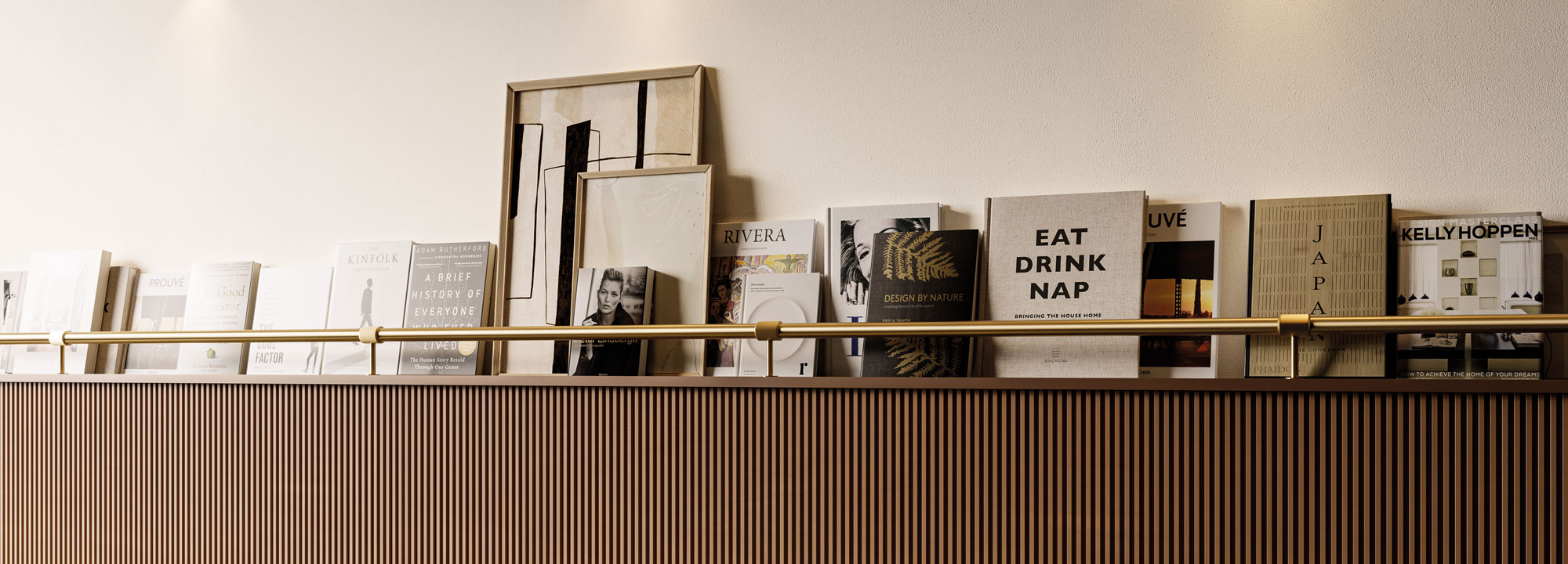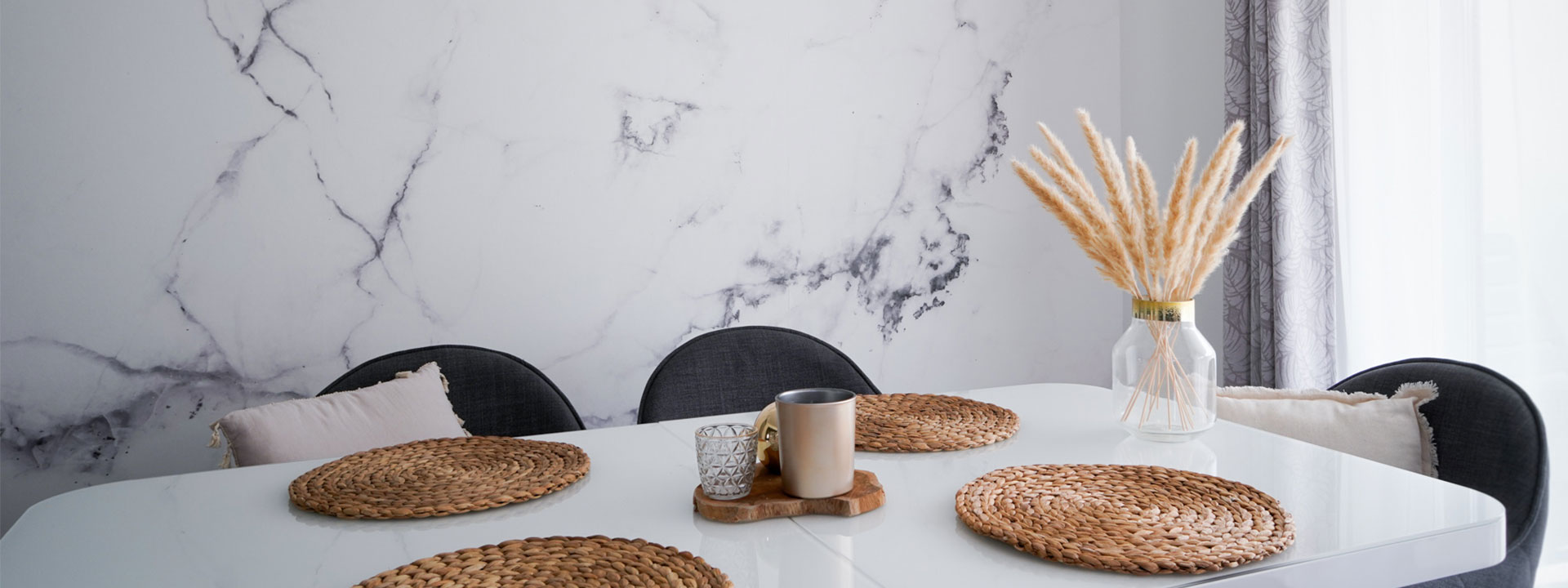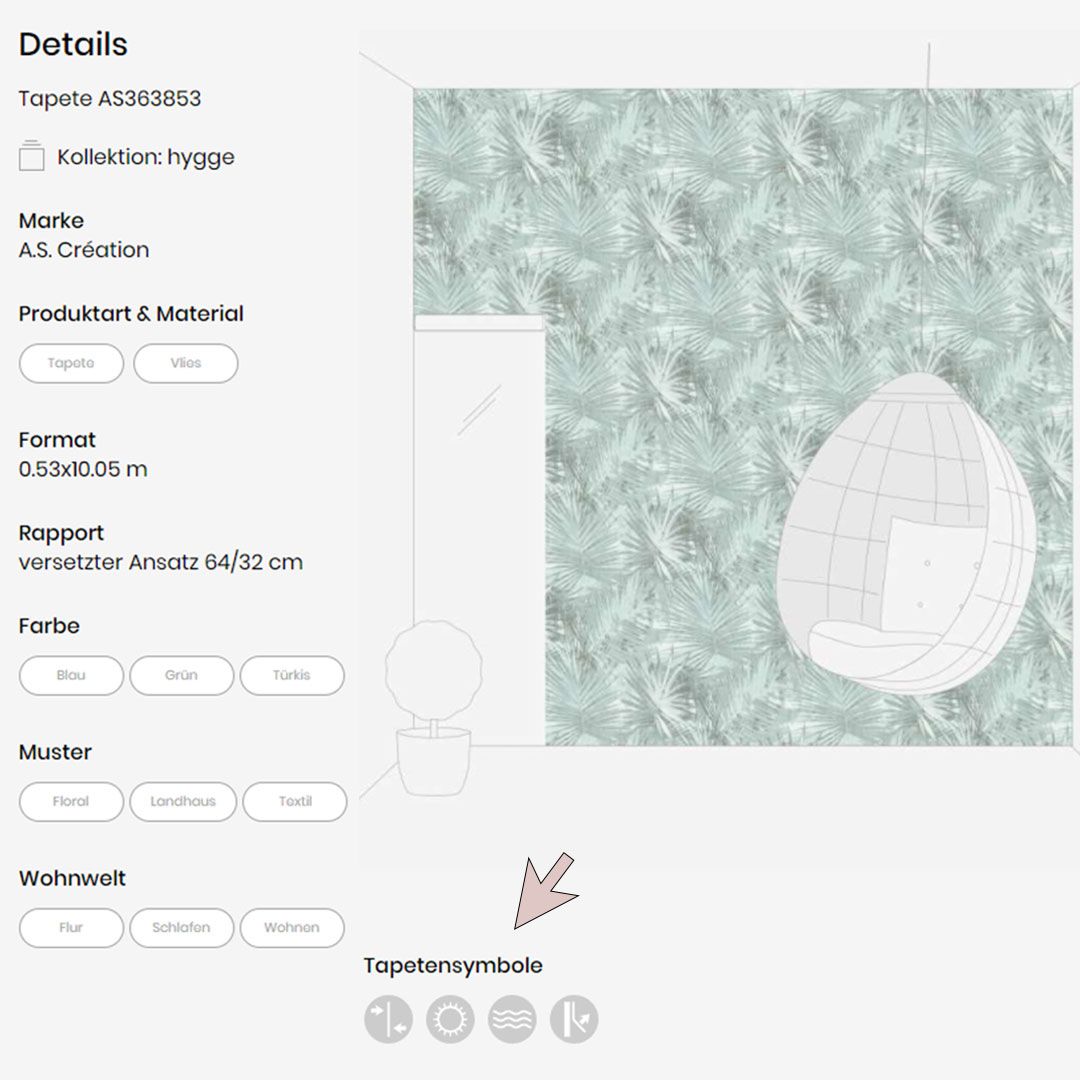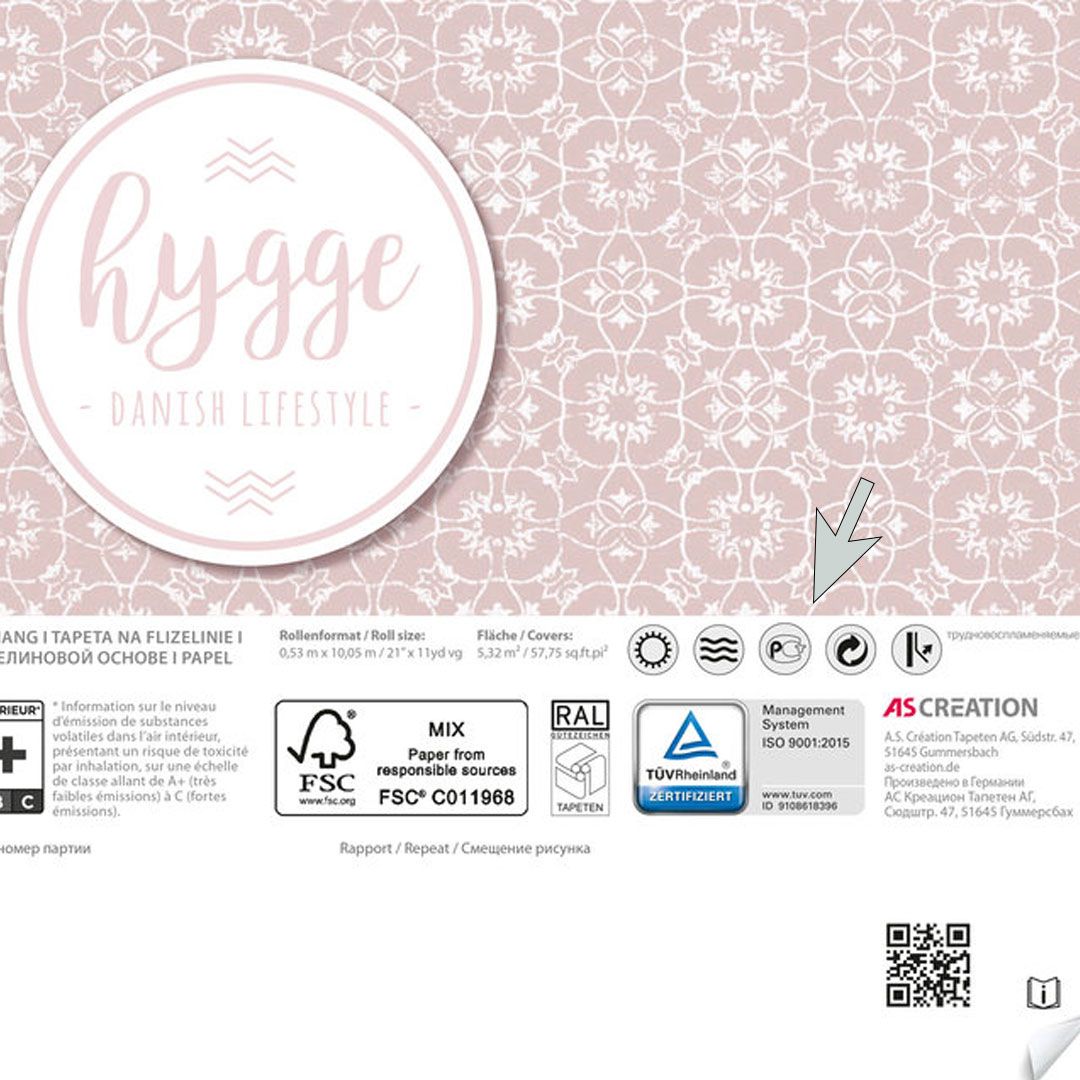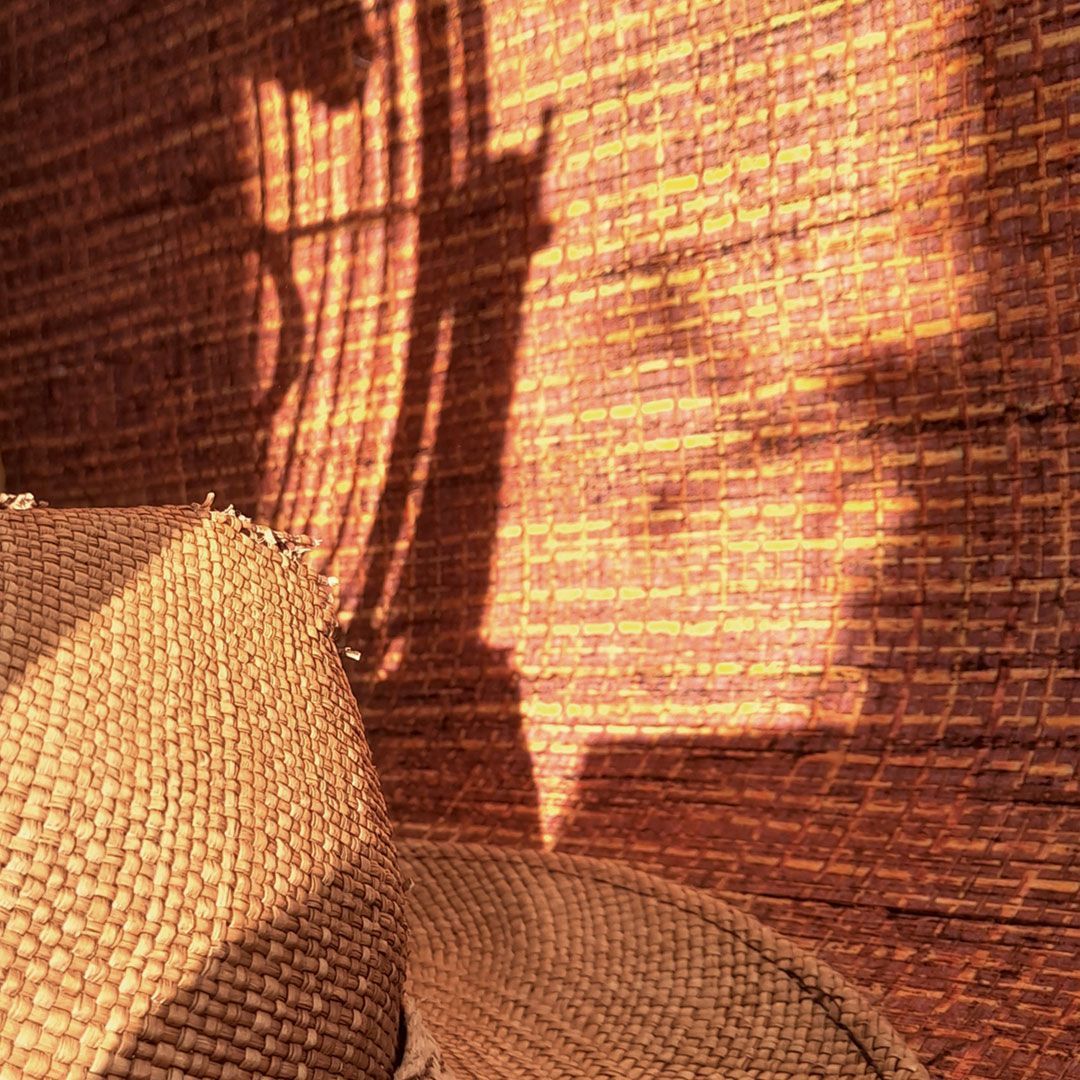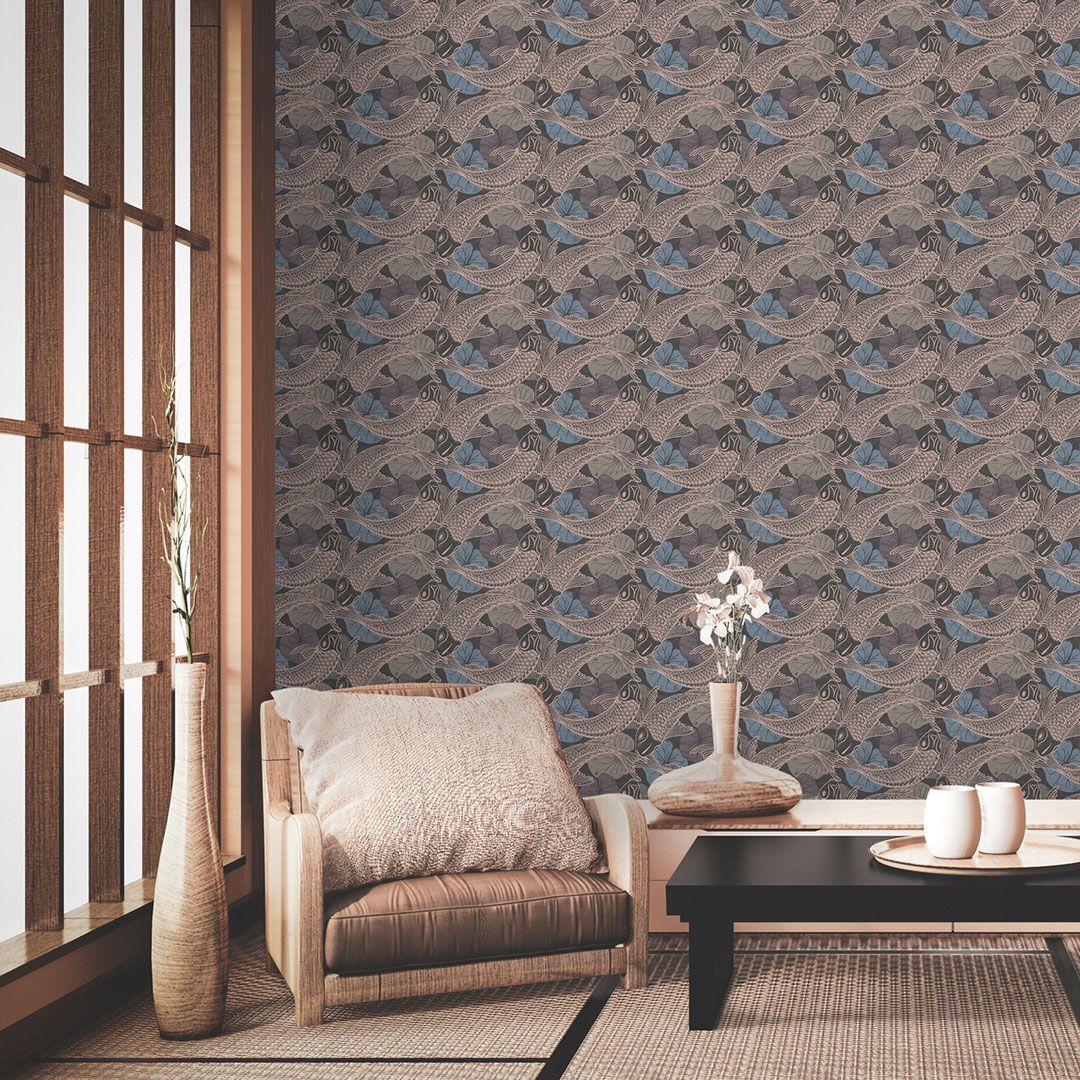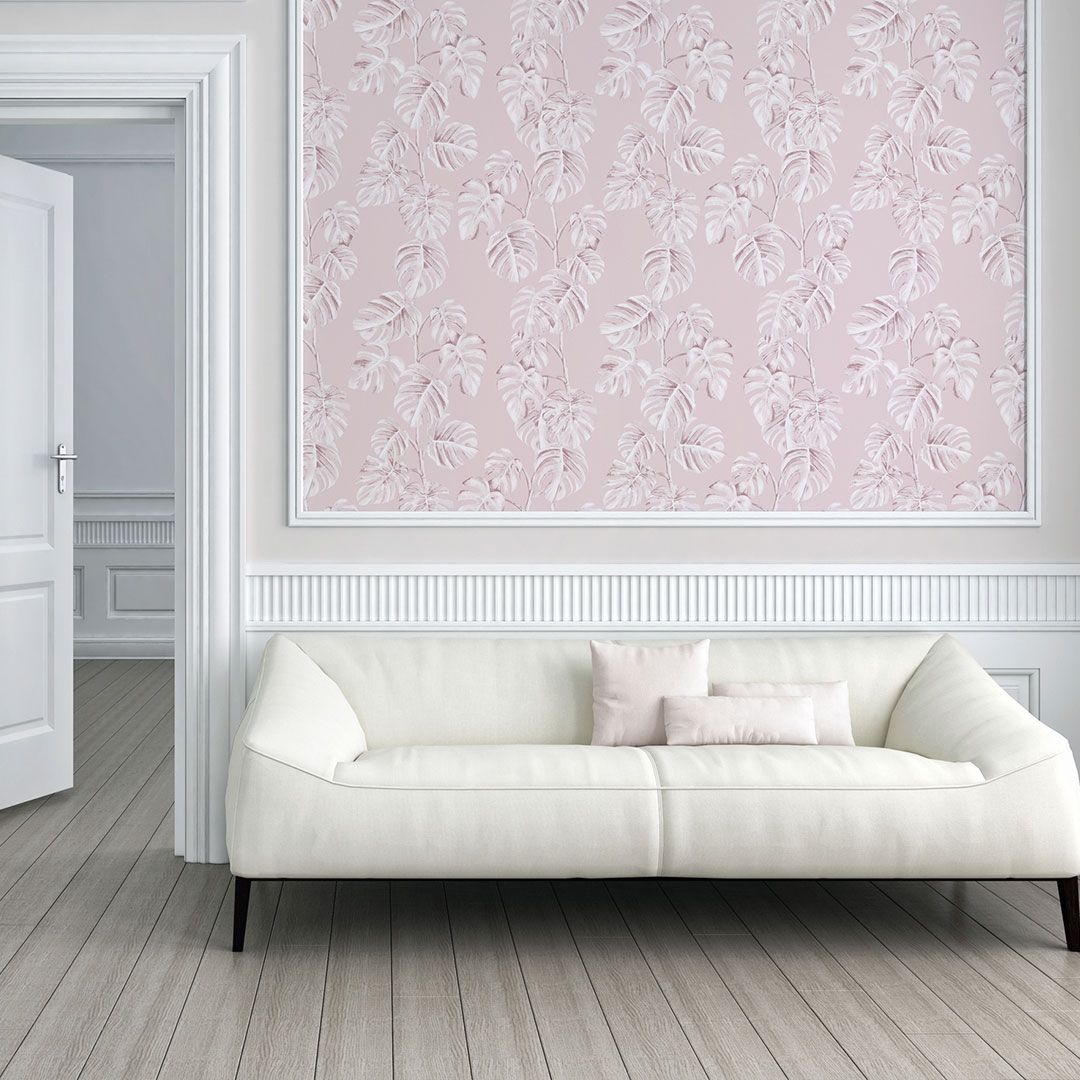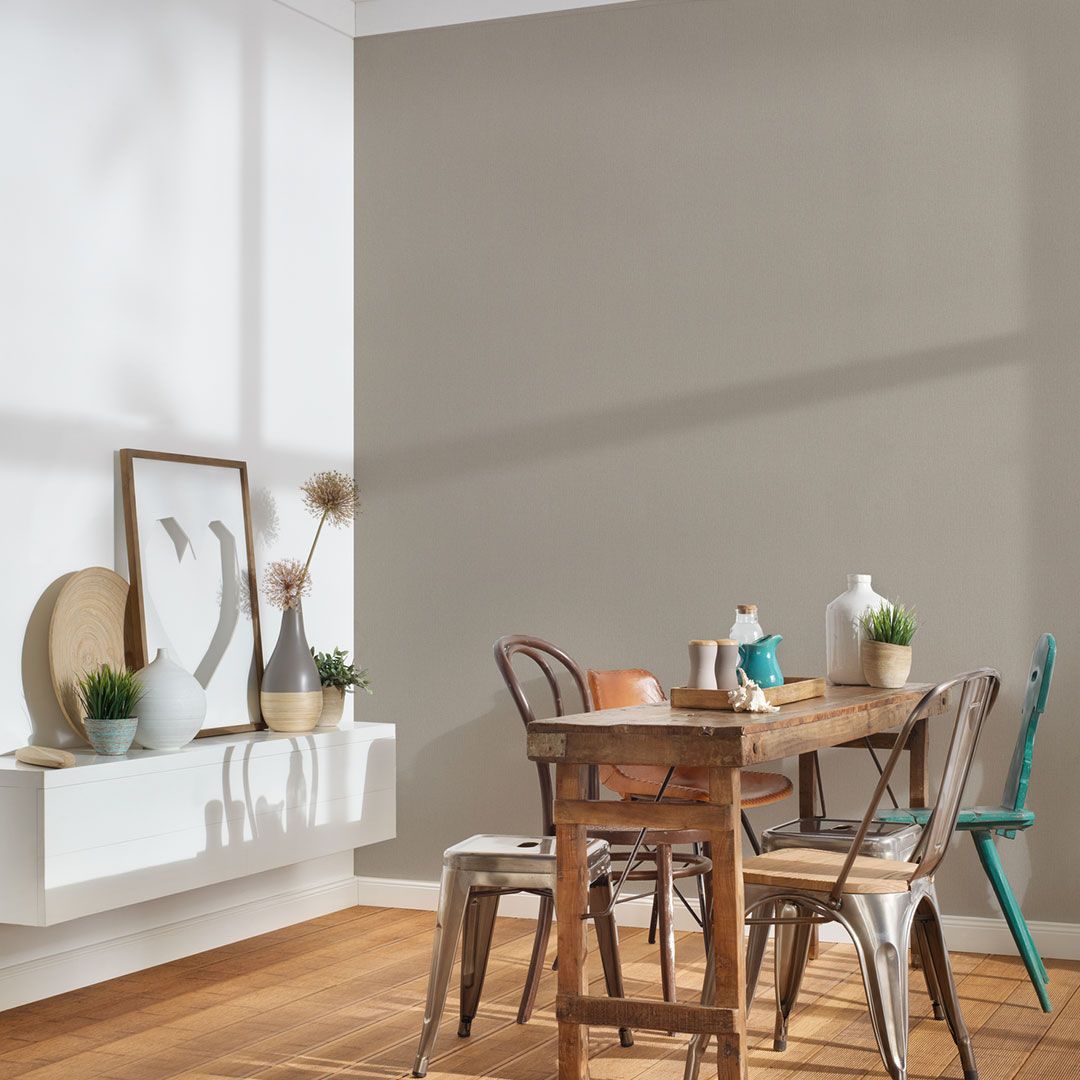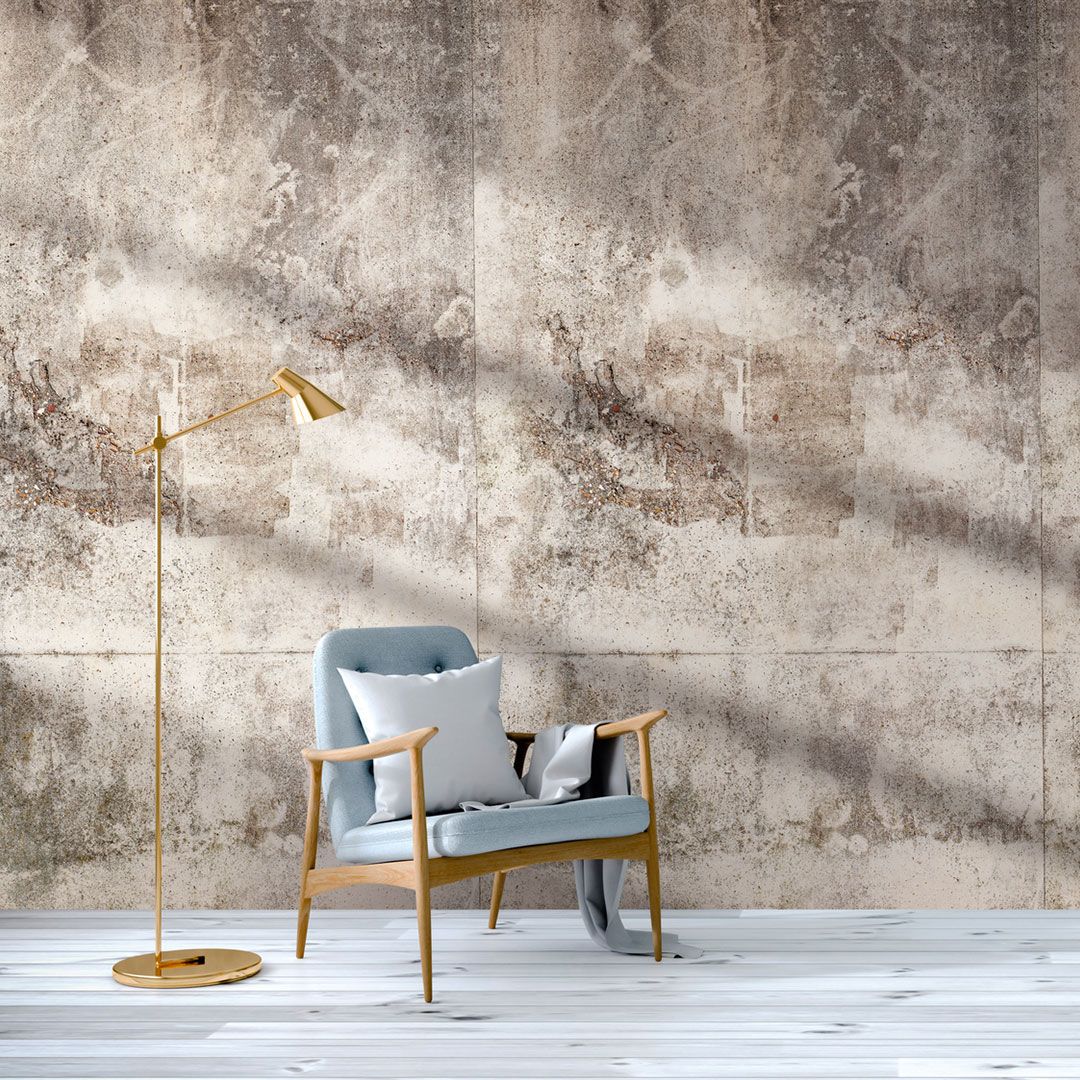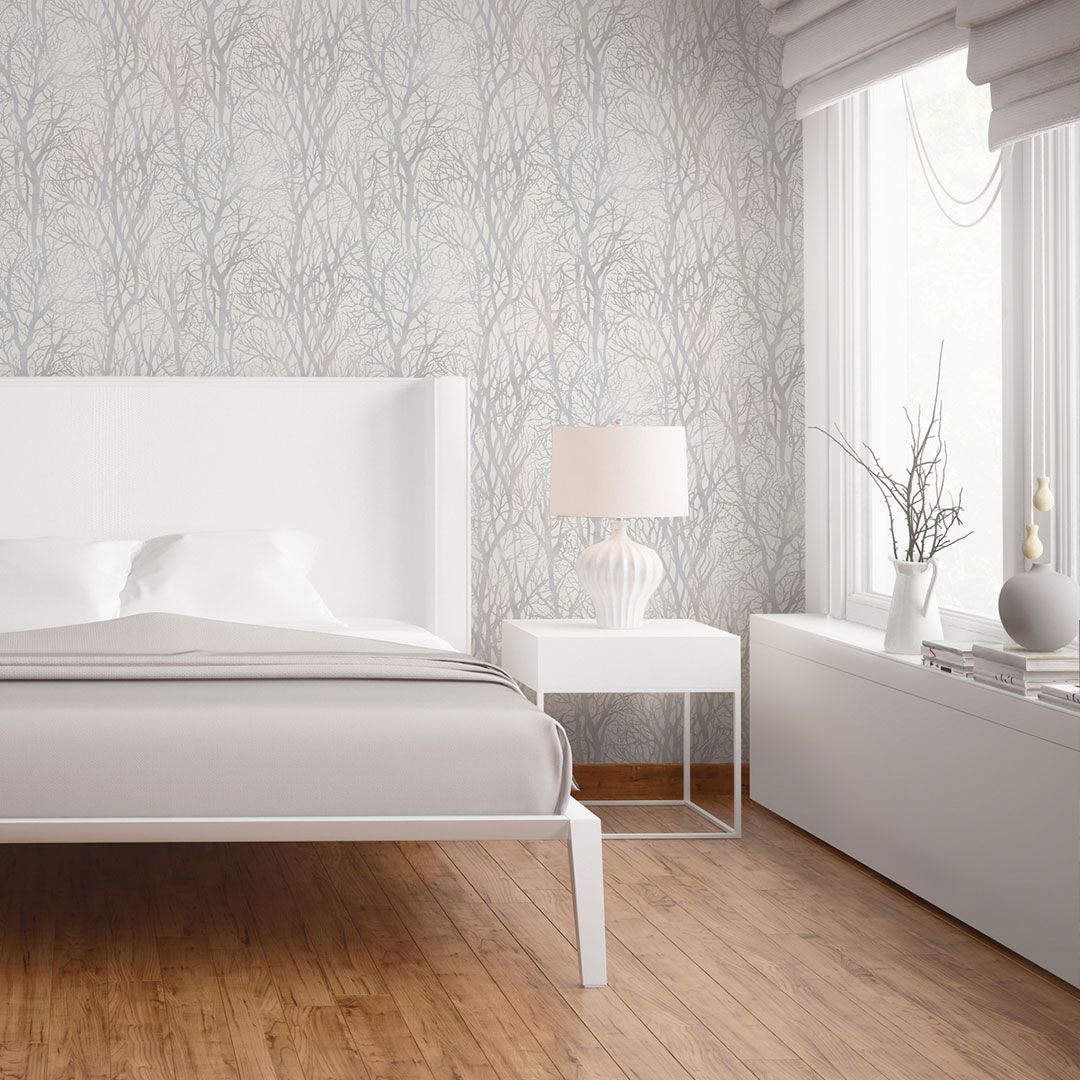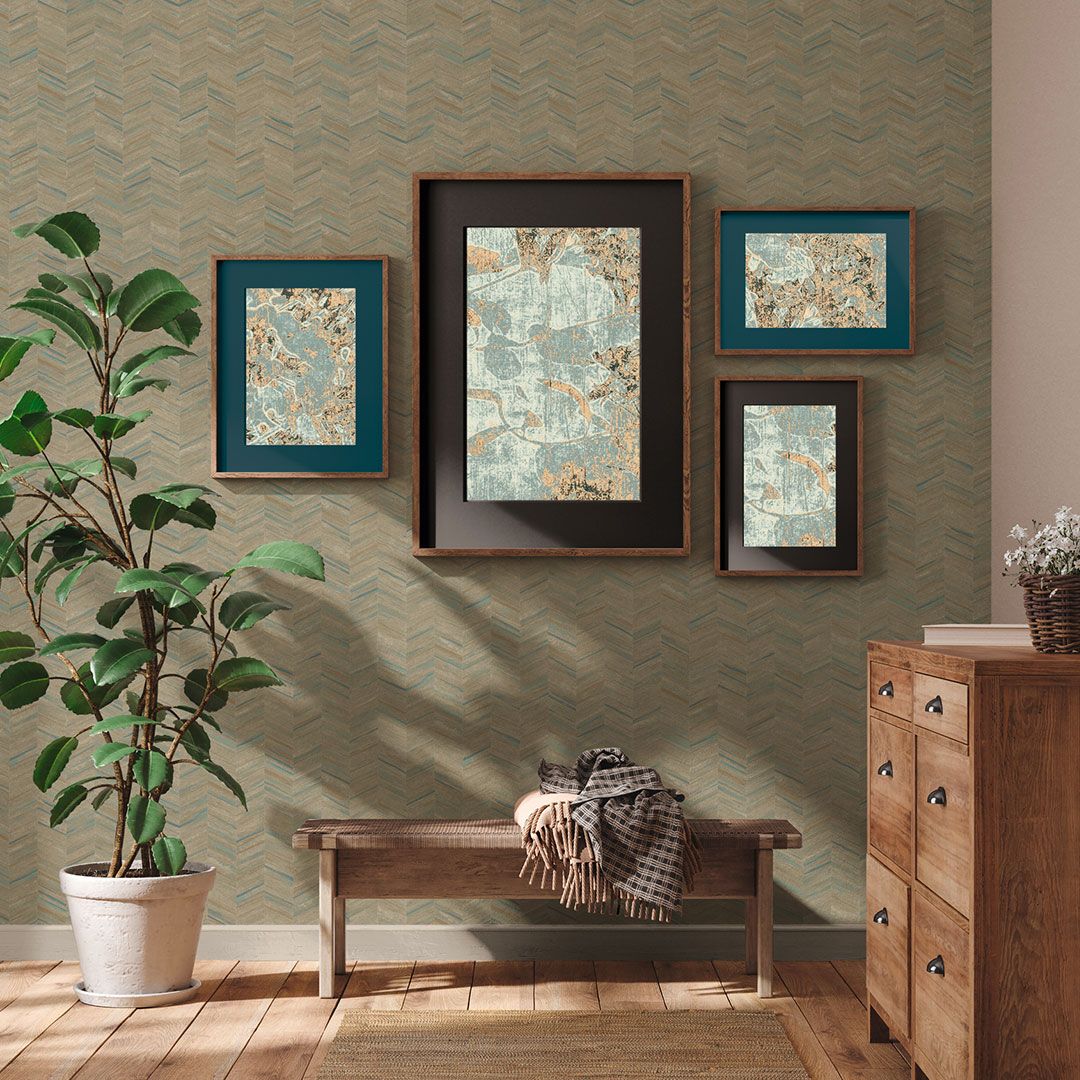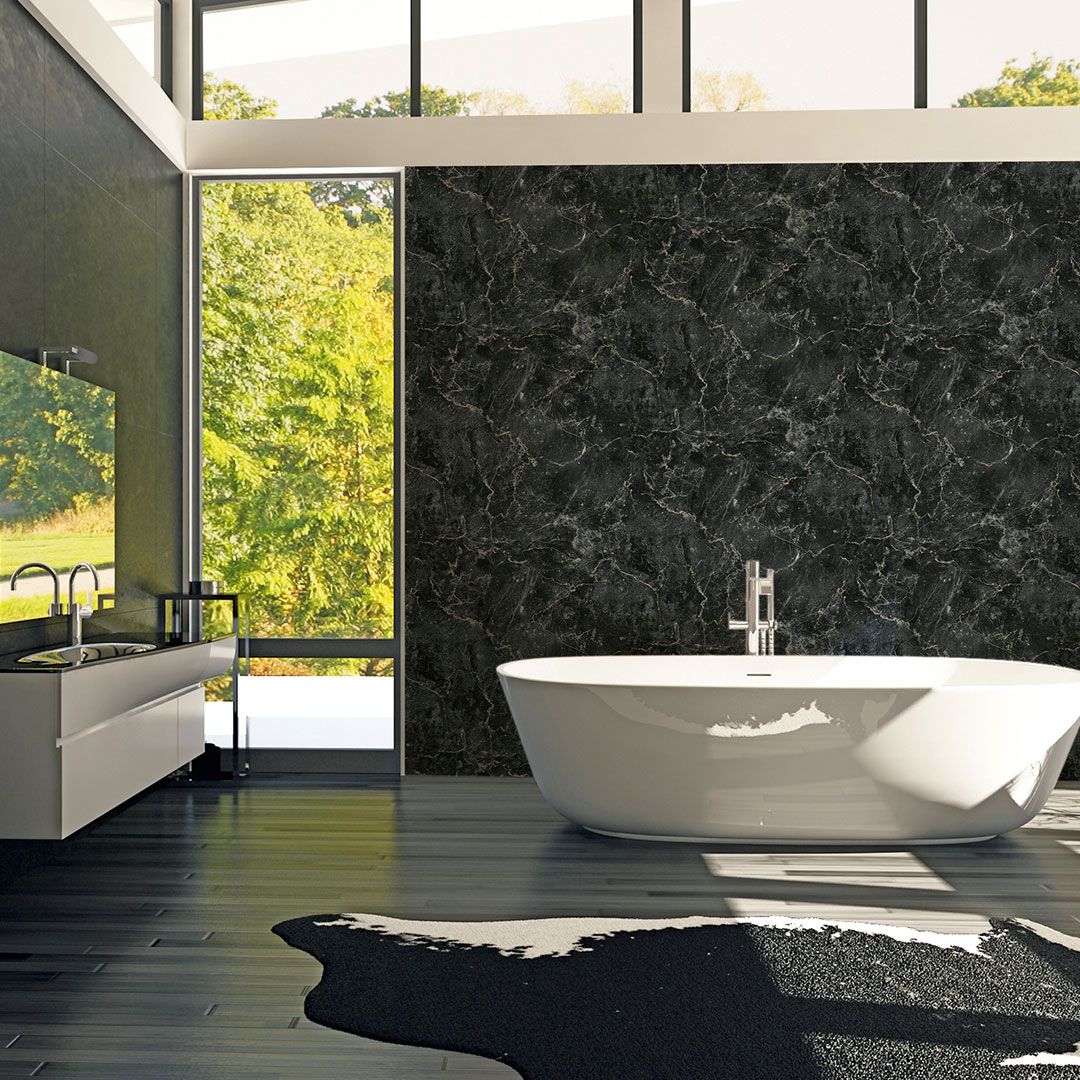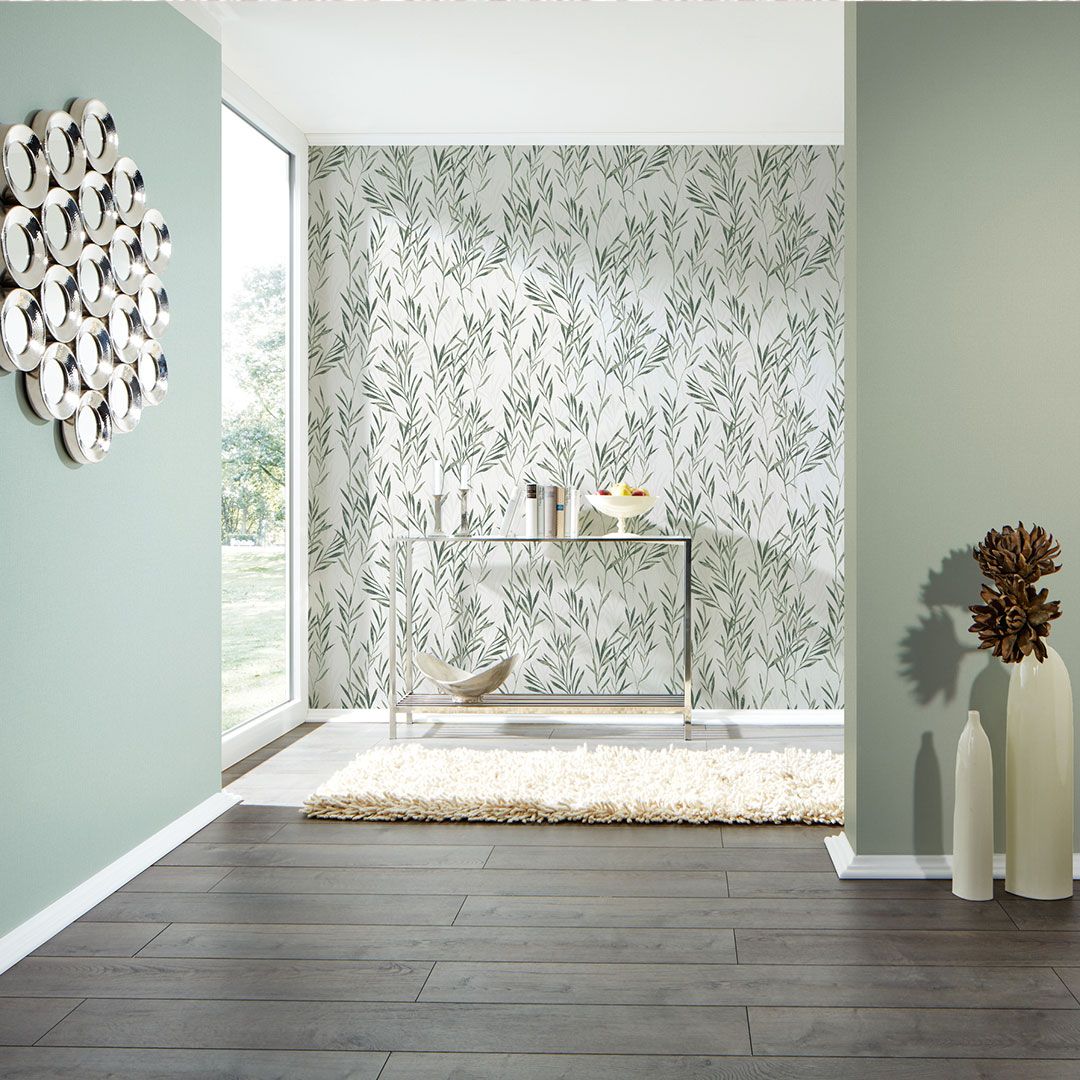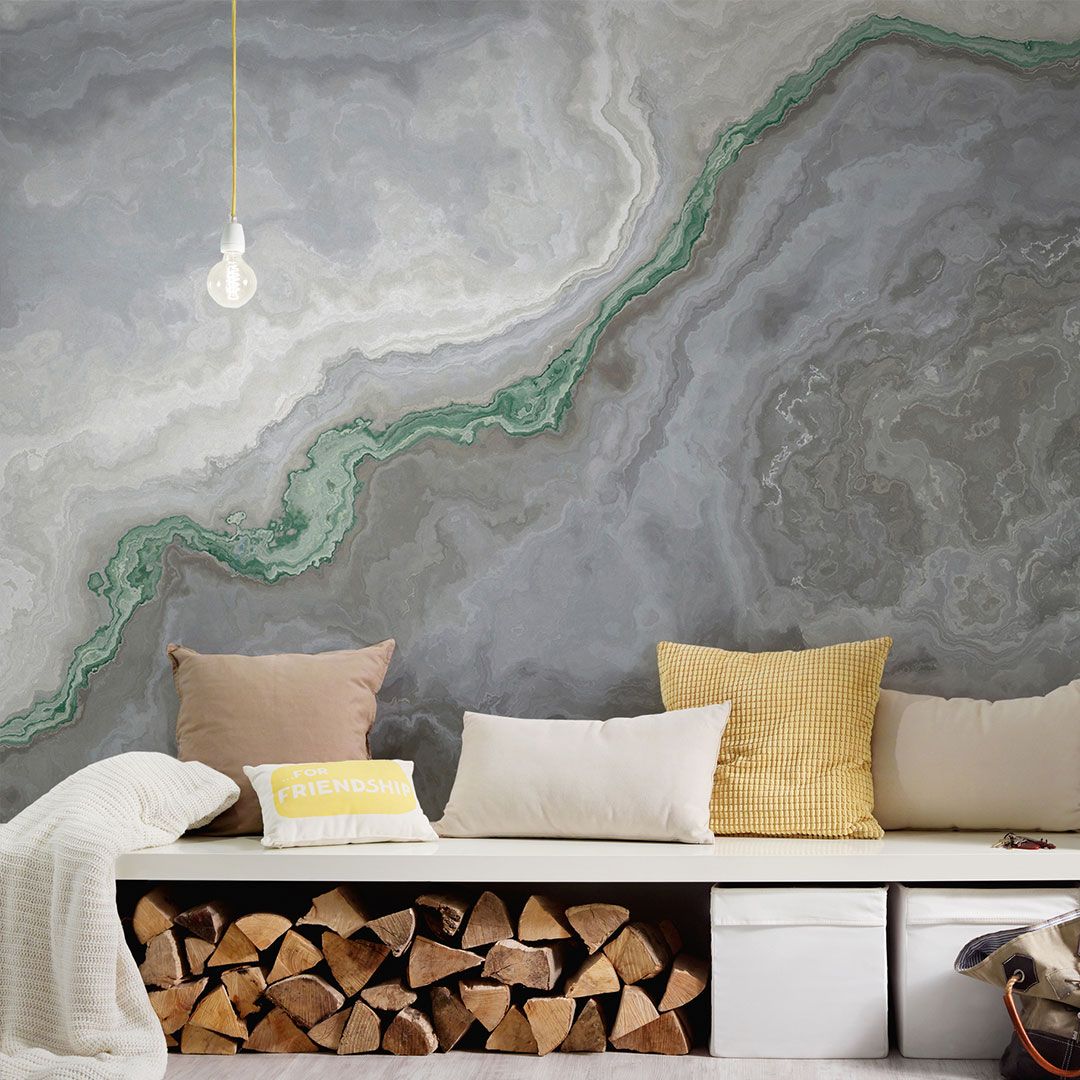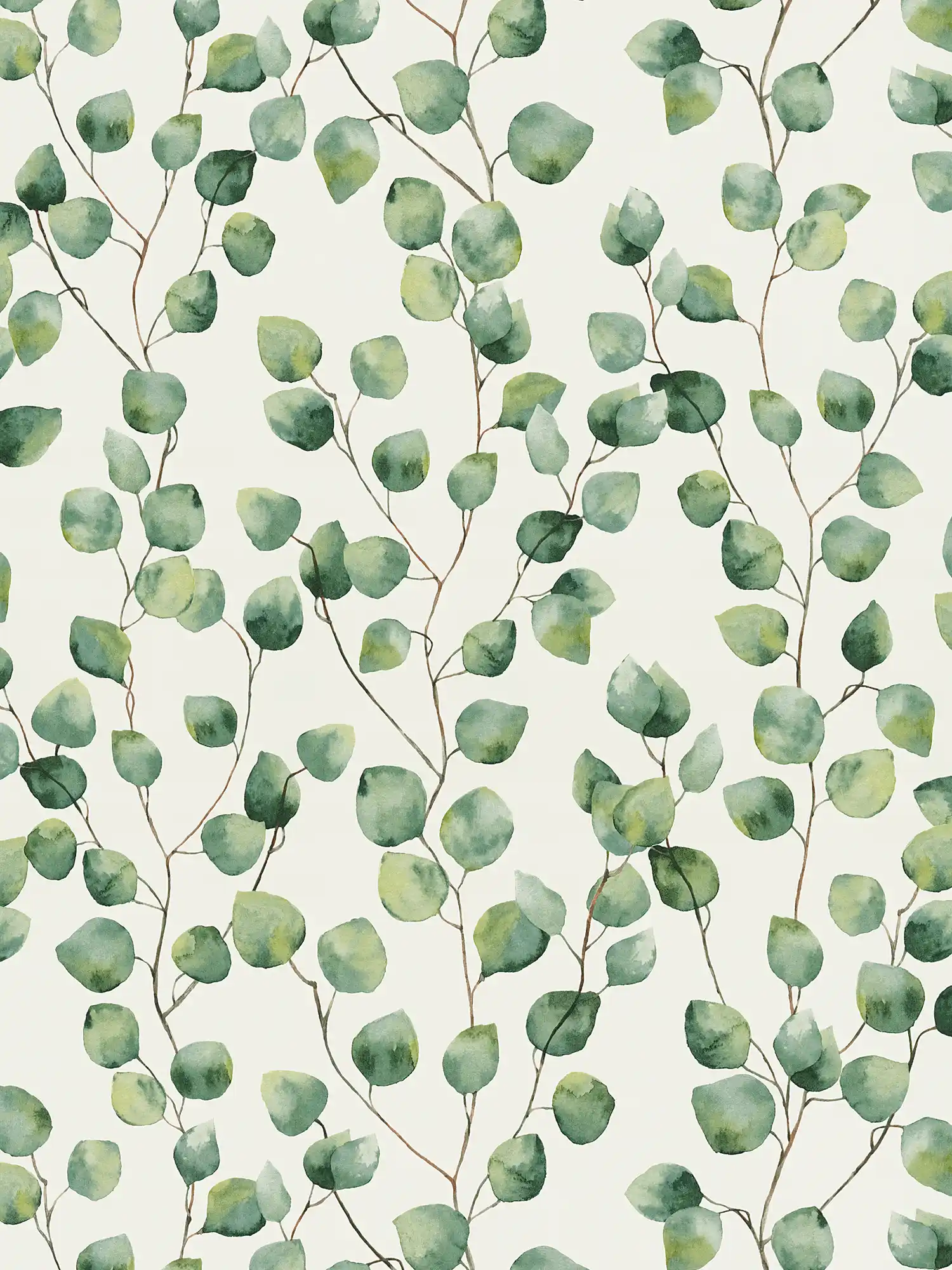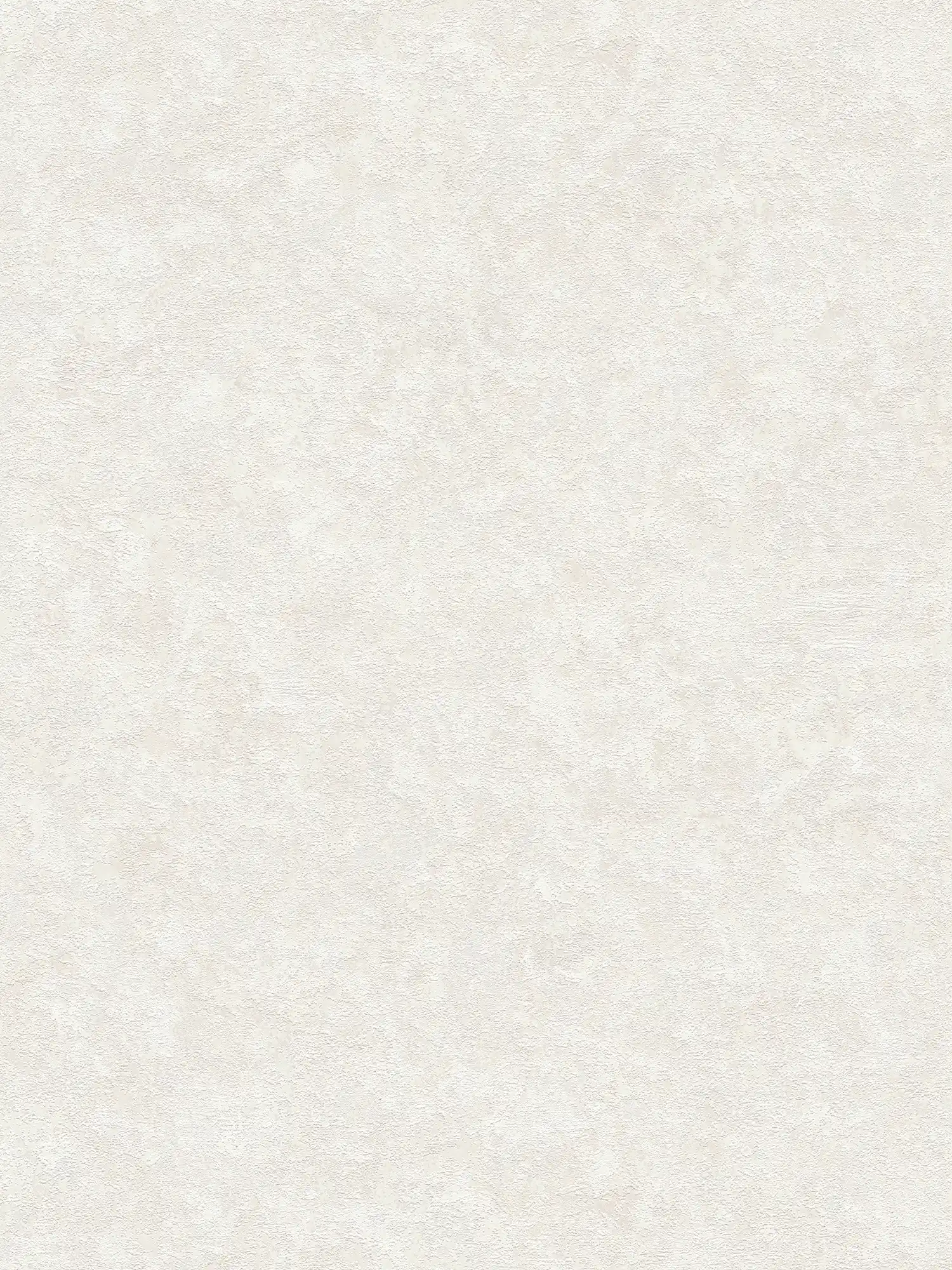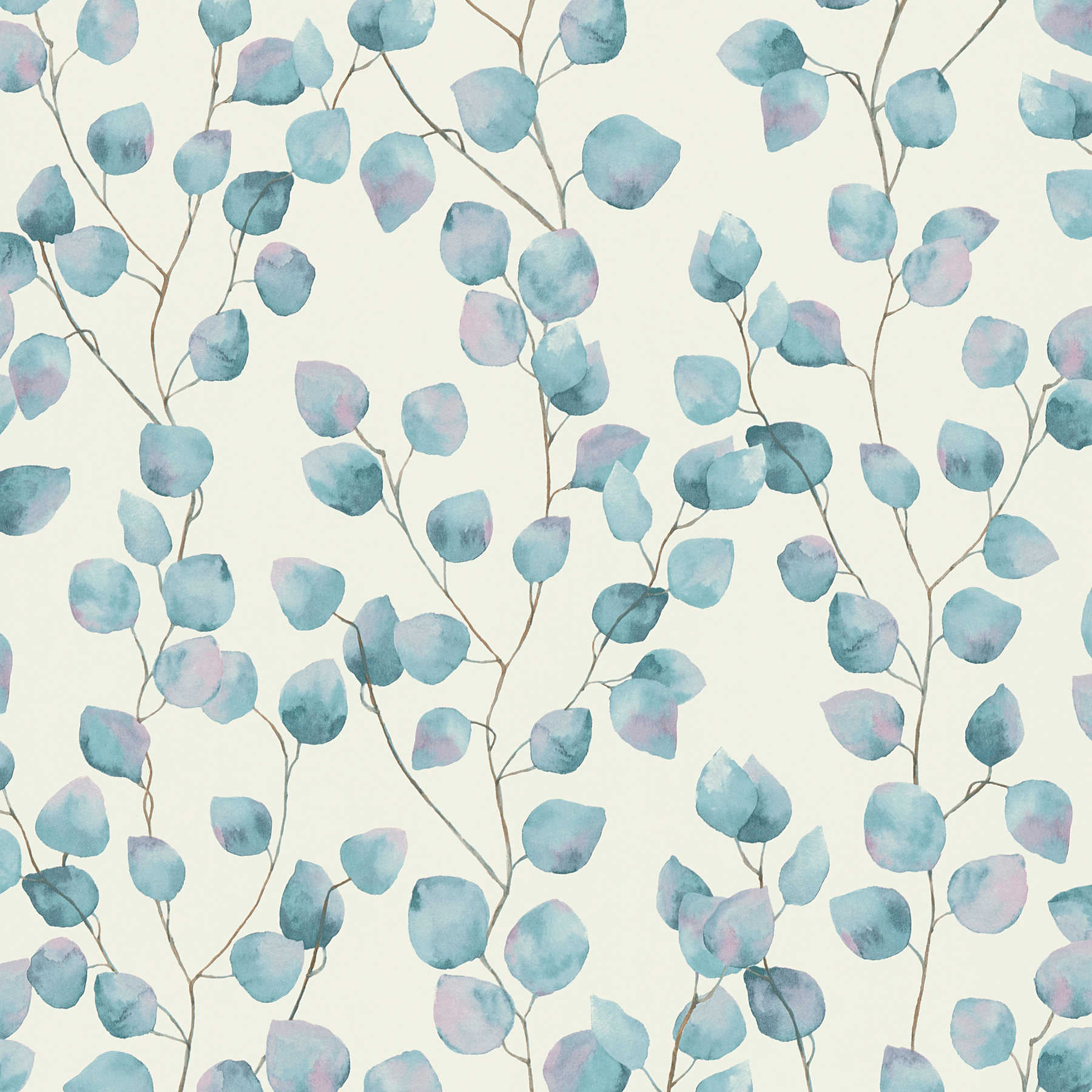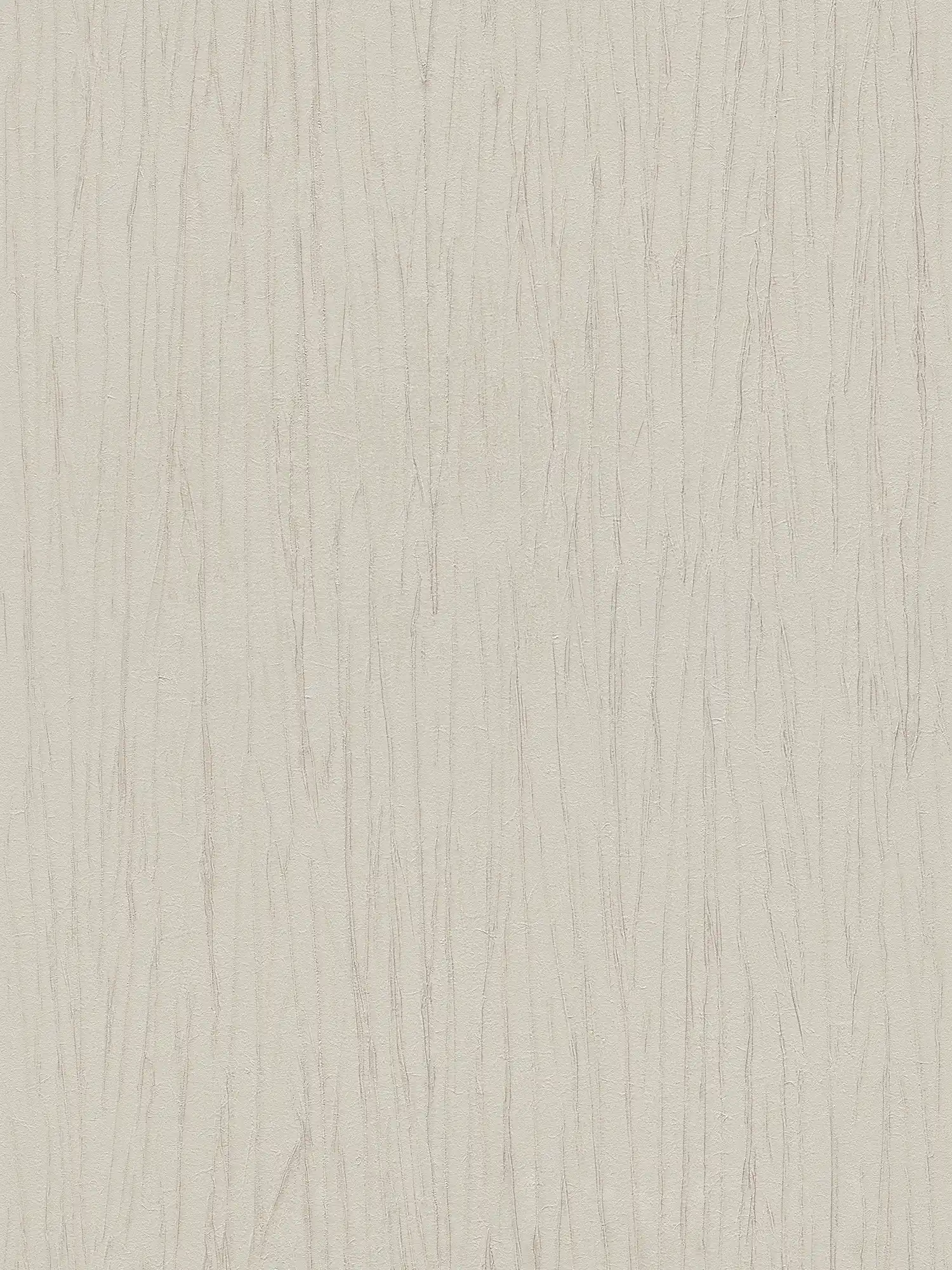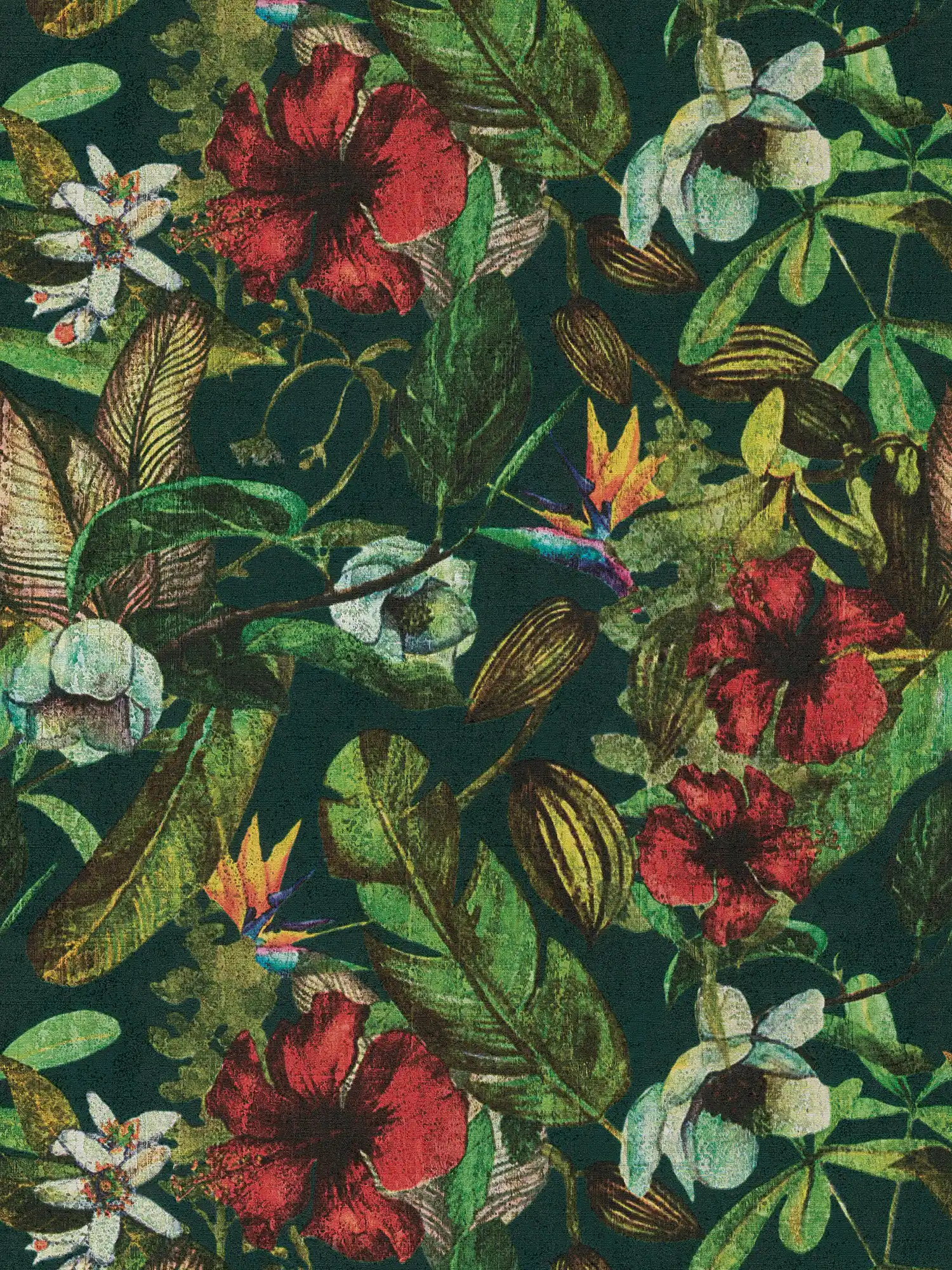Light resistant wallpaper – Colourfastness & intensive luminosity
The light resistance of a wallpaper is indicated with the sun symbol on the roll or in the product description. The wallpaper symbols featuring a sun indicate the resistance of the wallpaper colours and show how well the wallpaper can withstand long-lasting and intensive UV sunlight. As a rule of thumb:
the more of the sun is visible, the higher the light resistance of the wallpaper.
Symbols – Explanations
How do I check how light resistant and colourfast my wallpaper is?
You can find this information on the wallpaper symbols on the insert or on the box for the wallpaper. You can also find the characteristics of all wallpapers online; you will find the information on the product page under Details; here, you will also find the easy-to-interpret wallpaper symbols.
Not only that: You will always find information on all of the important characteristics of the wallpaper in our samples. The stamp on the back of the sample shows the light resistance and water resistance of the wallpaper, as well as processing instructions. You can find more details about new-walls.com sample service on our service pages.
Where can I hang light resistant wallpaper?

wallpapers with adequate light resistance are suitable for rooms without much sunlight

wallpapers with satisfactory light resistance are suitable for rooms with average UV sunlight

wallpapers with good light resistance are suitable for rooms with regular sunlight

wallpapers with very good light resistance are suitable for bright rooms with a window at the front.

wallpapers with excellent light resistance are suitable for south-facing rooms, for example a conservatory.
Despite using resistant colours, wallpaper can lose its original colour intensity and luminosity when exposed to long-lasting or intensive sunlight. Long-lasting or strong sunlight can cause colour pigments to fade. There is a risk of loss of colour in wallpapers that are hung behind a large glass window and which are subjected to rays of sunlight particularly often and for a long time. Wallpapers on south-west facing walls are often exposed to more sunlight when large windows or glass doors allow the light to enter.
The differences in the light resistance of a wallpaper are easy to recognise using the sun symbols. The rule of thumb when comparing the symbols is: the more of the sun is visible on the symbol, e.g. half, full or double, the more resistant it is against UV light. Wallpapers with high light resistance retain their colours and do not fade, whereas wallpapers with low resistance can gradually lose their colour. You can tell when wallpapers have faded; for example, when there are differences in the intensity of the colour on the strip of wallpaper, there is a milky veil over the wallpaper pattern, or the edges of the wallpaper pattern are unclear. Often, this loss of colour is only visible in certain places, for example, opposite a window.
It’s possible to notice discolouration caused by rays of sunlight on other surfaces, too; wall paint may also fade, as can furniture surfaces such as wood or fabrics. You can also prevent fading by consistently drawing the curtains or blinds, but it’s cosier and more appealing to look for a suitable wallpaper.
To keep your walls looking as beautiful and colourful as you want them to, you should think about how much sun your room or the wall gets. If, for example, you have an interior space with small windows or few windows, which allow a normal amount of light in, then you can use wallpapers with any type of light resistance without any concerns. If you’re planning to hang wallpaper in your conservatory, it’s important for your wallpaper of choice to have very good or excellent light resistance. That’s because a lot of rays of sunshine will fall on this wall repeatedly and for an extended period.
Colourfastness & light resistance
When it comes to wall design, both of these terms refer to the wallpaper’s resistance against UV sunlight. Like all pigmented surfaces, intense sunlight may cause them to fade. In order to minimise this effect, better, more stable colour pigments are used, which are particularly light-resistant. Depending on which material and which colour compositions are used for the wallpaper, a certain tolerance against UV light is created. This tolerance is expressed as relative light resistance. There are various levels of this tolerance: adequate, satisfactory, good, very good and excellent. Colourfastness, i.e. the durability of the colour, is also a term that describes how resistant the colours are to fading. If you don’t find any reference to the light resistance of a certain wallpaper on the wallpaper, you should find something about the relative colourfastness on the insert or the packaging. These details can vary slightly from manufacturer to manufacturer.
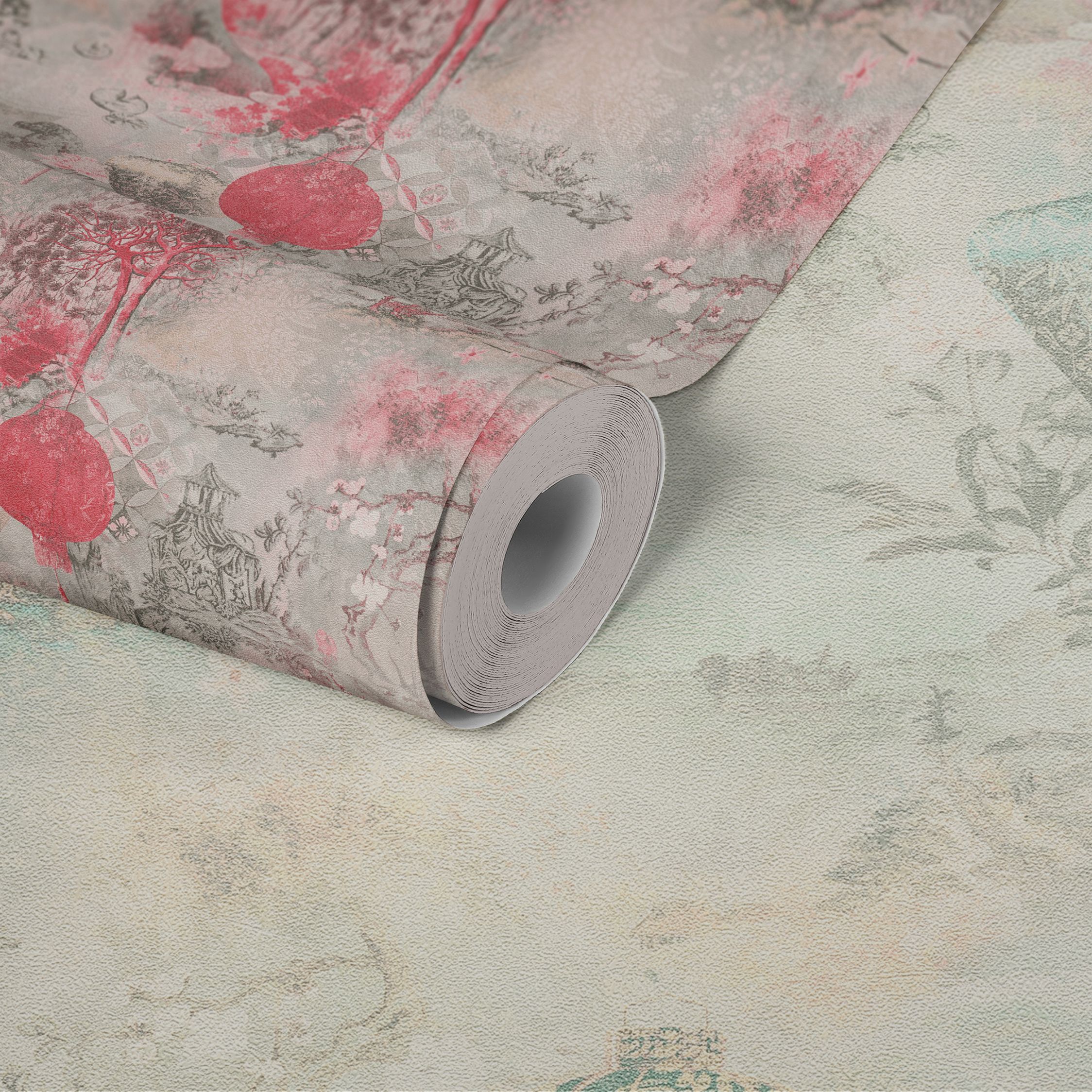
Here is a direct comparison of a wallpaper. The same motif, but one has bright colour accents, and the other has faded colour accents.
Which combination appeals to you more?
How can I tell if a wallpaper is faded or is losing colour?
As fading is a long process, you often only notice that the colour and luminosity of the wallpaper has changed once a lot of colour has been ‘lost’. If the wallpaper becomes milky or the colour looks greyish, a direct comparison can often be made between new and old. If you look at the wallpaper in an area that is protected from the sun, for example, behind a piece of furniture, a picture on the wall or in a dark corner of the room, you can see the original colour of the wallpaper.
Wallpapers fade where a lot of sunlight hits the wallpaper, which is why, in extreme cases, so-called light shadows appear on the wallpaper. These are the traces of the path of the light on the wallpaper; surfaces above or below it then usually stand out darker because they have not been bleached by the light, or have been bleached to a lesser extent.
With light-coloured wallpapers, the fading is much harder to assess than it is on strong colours or striking patterns. But even here, colour loss can gradually become noticeable. In these cases, the colour loss looks like a whitish-grey veil, the wallpaper looks milky or foggy, and the patterns look fuzzy.
How do I protect wallpaper from colour loss and fading?
The most effective way to protect wallpapers with low light resistance from fading is to avoid direct, sustained exposure to sunlight. But that doesn’t mean that you have to live in the dark. Simply hang this type of wallpaper in a room with little sunlight or windows that you can easily darken. Usually, a semi-transparent drape or a light pleated blind will be enough to make rays of sunshine milder, meaning that the colour pigments of the wallpaper are not affected, and a lovely cosy atmosphere is created in the room.
In sun-flooded rooms with no way of darkening the room, you can also seal the wallpaper with a transparent protective coat – this so-called ‘elephant hide’ not only protects your wallpaper from light, it was primarily developed to offer protection from water spray. In rooms of this kind, however, it’s better to select a wallpaper with high levels of light resistance. This includes wallpapers with symbols denoting good, very good and excellent light resistance. These wallpapers withstand the sunlight for the longest, and bring you long-lasting pleasure without losing their brilliance; they also don’t need to be protected from the sun in any other way.
Faded wallpaper, what next? – renovation instead of irritation
If the wallpaper has lost its colour and is now faded, you have two options. Paint over it or re-wallpaper. Once the colour pigments have been destroyed, you can’t rescue them, so to restore the colour, you can either paint over it or hang a wallpaper with patterns and designs.
Depending on what type of wallpaper is on the wall already, you can paint over the faded material. But be careful, because depending on the wallpaper material, you have to be particularly careful. Paper wallpapers, for example, are very difficult to paint over as there is a risk that the colour will soften the paper and cause it to warp. You should therefore do a test in a small area beforehand to check whether the wallpaper is still stable and the colour is taking well. Most non-woven wallpapers can simply be painted over; here, you need to take the choice of paint into account and use wall paint (emulsion paint) which is suitable for internal walls and do a test in advance to see how the wallpaper reacts to the paint.
It’s usually quicker to rehang wallpaper than to cover it up, and it gives you the opportunity to redesign the space in a creative way. A new light resistant and colourfast wallpaper will breathe new life into your walls and is easy to hang. You have a choice between countless patterns, structures and colours. But do pay attention to the wallpaper symbols and choose a wallpaper with good colourfastness. It’s easy to hang wallpaper, so have no fear! On our advice pages, you will find lots of tips and tricks as well as a comprehensive guide to make wallpapering quick and easy.
Types of wallpaper at a glance: Which wallpapers are particularly light resistant?
There is no absolute rule as to how light resistant and colourfast a wallpaper is, but a helpful rule of thumb when looking for the right wallpaper for your wallpapering project is as follows: the more is required of the wallpaper, the more robust the material needs to be.
More specifically, this means that when choosing the type of wallpaper, you need to pay attention to the material, as this will determine the durability of the wallpaper as well as how resistant the colour pigments are, and, therefore, the light resistance. With paper wallpapers, which predominantly consist of recycled material, the cellulose fibres are coloured with compatible pigments that have a lower resistance to excessive sunlight. Paper wallpapers are therefore marketed as having good light resistance, and rarely with high resistance, etc.
Amongst the range of non-woven wallpapers and vinyl wallpapers, depending on the recycled content of the synthetic fibres and the variety of processing steps and pigment colours, there are various wallpapers with good, very good or even excellent light resistance. Non-woven wallpapers should, therefore, always be favoured if the wallpaper needs to retain its colour and luminosity for a long time, or if it is subjected to intensive rays of sunlight comparatively frequently. Vinyl-coated wallpapers, in particular, are safe from fading; the very thin but stable PVC coating also protects the colours, motif and texture of the wallpaper from water, dirt and prevents abrasion.
In addition to the large selection of wallpapers with the right light resistance, there are also other solutions available in specialist shops and online to protect the wallpaper from light incidence. If you prefer a certain wallpaper design, but it offers too little protection against colour loss, then you can still hang that wallpaper and then protect it afterwards. You can read more about this in the section entitled ‘How do I protect wallpaper against colour loss and fading?’.
Why and when should I pay attention to the light resistance and colourfastness of the wallpaper?
You should pay attention to these wallpaper characteristics if you are hanging wallpaper where it is subjected to long-lasting or intense UV light. That’s because, in these areas, colour loss happens more quickly, with a negative impact on the effect of the wallpaper. If you want to enjoy the colour and pattern of a wallpaper for a long time, then choose wallpapers that have adequate light resistance, depending on their position. We would recommend that anyone who wants to keep their wallpaper on the wall for a long time and enjoy it should take a look at the characteristics of the wallpaper.
Light resistant and colourfast wallpapers should certainly be hung where sunlight falls on the wallpaper intensively and for a long time, and there are also no protective measures in place, such as curtains or a UV filter.
Furthermore, anyone who regularly hangs new wallpaper and likes to have new designs on the wall can also hang wallpaper with a lower level of light resistance. As colour loss on wallpapers is a gradual process that often takes many years, a small amount of colour loss will be barely noticeable. Anyone who hangs new wallpaper every year or who can make the room darker using sun protection measures also has the option of hanging a less resistant paper wallpaper or a non-woven wallpaper with satisfactory or good resistance.
What else should be taken into account apart from light resistance?
Another important factor when choosing wallpaper can be the water resistance and/or washing resistance of the wallpaper. When hanging the wallpaper itself, you also need to know what sort of processing the wallpaper is suitable for and whether you need to pay attention to orientation and patterns. Easily understandable wallpaper symbols are also available for these wallpaper characteristics. For more information about the product details, look at our advice pages, where you will find an overview of all the important information, or a detailed explanation in the form of a blog post.

